READY TO GET STARTED?
REQUEST A FREE ESTIMATE
Fill out the form below or call (855) 789-9807 for a free, no-obligation estimate.
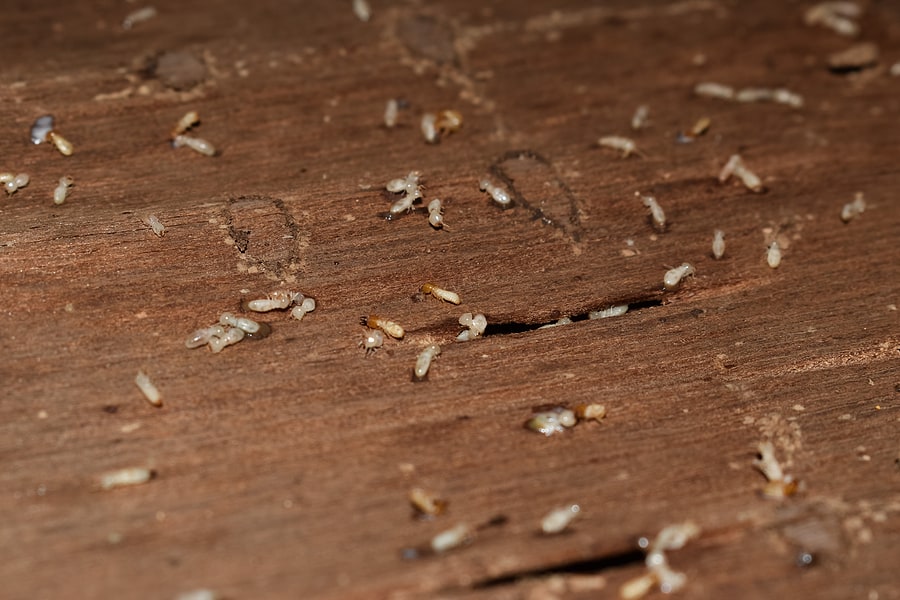
Termites are highly destructive household pests, causing billions of dollars in damages to homeowners annually. Most homeowner’s policies don’t cover termite damage. What options do homeowners have to protect themselves from these pests?
Two options that are available are a termite warranty and a termite bond. These terms are often used interchangeably but they are, in fact, different.
A termite warranty is similar to an insurance policy you take out against termites. It is insured by an insurance company and allows for more coverage against damages. These warranties will also include an agreement for ongoing monitoring and/or maintenance for the length of the warranty term. They also require the termite control company who provides it to treat for termites if they are found on their annual termite inspection during the warranty period. It can also specify if the pest control company will repair any damages from termites or if they will only retreat the home. Some warranties can even be transferred between homeowners (such as during the sale of the home) but others cannot be transferred.
Termite bonds are similar to warranties. The difference between the two is that bonds require the pest control company to hold a specified amount of money in a surety bond.
Some kind of protection against termites and termite damage is beneficial to homeowners. If you are interested in scheduling a termite inspection or taking out coverage against termites, contact your pest control company for more information.
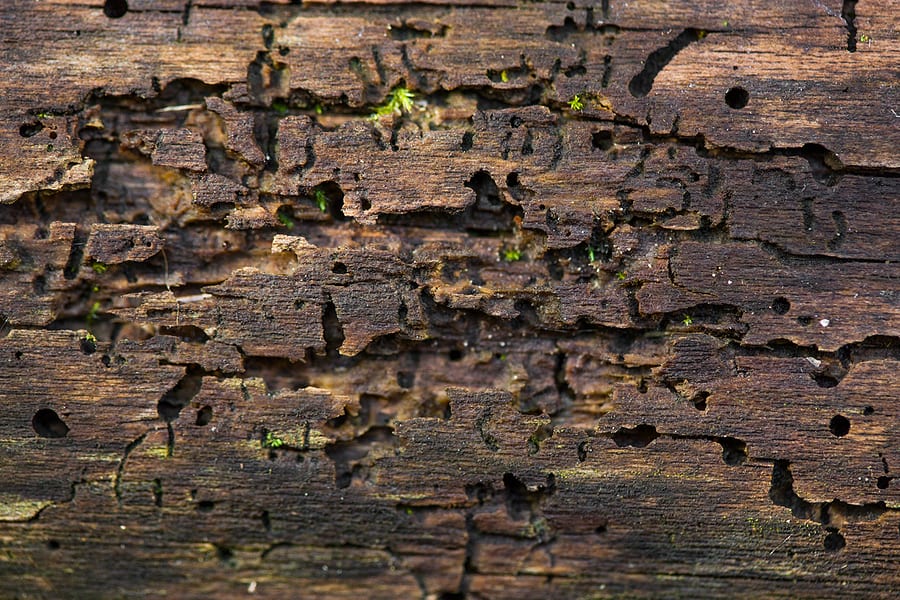
Termites are one of the most destructive pests, causing significant damage to homeowners in the United States each year. Termites often go long periods of time undetected, allowing a termite infestation to proliferate inside your home. But what causes a termite infestation in the first place? What attracts termites to your home?
Termites are attracted to moisture, especially subterranean termites. Damp basements, bathrooms, laundry rooms, kitchens, leaky pipes, and stagnant water around foundations are common areas that termites are attracted to. Rotten or water damaged wood should be replaced immediately. Leaky or broken pipes should also be repaired as soon as they are discovered. Make sure roofs and gutters are cleaned properly and that proper drainage systems are established. Check and repair issues with foundations. Use a dehumidifier to reduce moisture in attics, crawlspaces, basements, and any other rooms where humidity is high.
Termites will feed on just about any type of wood. This includes new wood, painted wood, treated wood, rotted wood, water damaged wood, wood mulch, wallpaper, and shelf paper. As such, care should be taken to reduce access to wood in and around your home. Foliage and mulch should be kept at least 28″ away from foundations. Wood mulch should be replaced with another coverage medium, like rubber mulch or treated cedar. Anywhere wood comes into contact with the sides of your home also provide a bridge termites can use for access. This allows them to make their way inside, even bypassing soil that has been treated with termiticides. Get rid of any vines, trellises, mulch, stumps, firewood, etc. that is close to your home’s foundation. Trim limbs away that touch the roof, as well.
Termites are silent destroyers, eating wood from the inside out, allowing them to establish colonies and infestations before any signs of their presence arise. It is important to recognize the signs of termites so they can be detected earlier before they can cause significant damage. It is also beneficial to have an annual termite inspection performed by a termite control company. These professionals will inspect the interior and exterior of your home, looking for signs of termite activity or previous termite damage. They can then present you with the best termite control options when necessary.
Are Bed Bugs Active in the Winter?
When Is Millipede and Centipede Season?
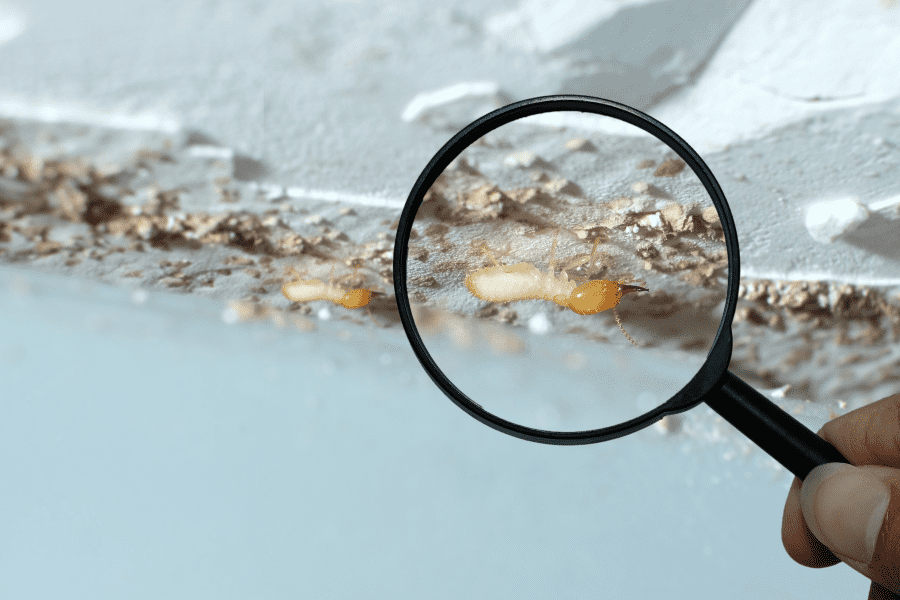
With termites being active 365 days a year, termite prevention is a year-round venture. Termite activity is typically more predictable in the winter months, so setting up termite treatments, especially bait stations, is ideal.
Termites in the south are more likely to discover strategically placed bait stations, like Sentricon® Always Active, year-round, but can also discover the bait stations in the winter. This is because in warmer months, termites are more likely to travel further away from their nests to find food. Termites tend to stay closer to home in the cooler months, making it more likely for them to find termite bait instead of food.
The first step to getting your bait stations in place is to have a property inspection. A technician will do an assessment of your property to determine the best placement locations for your bait stations. They will be able to evaluate the size of your property, age of the structure, and if any termites are currently active. The stations are then implanted into the ground with the top placed flush with the soil’s surface. The stations don’t need to be messed with and your technicians know when to check on them, making it something you don’t need to worry about.
If you are interested in getting year-round termite protection, be sure to reach out to your local pest control company to get started today!
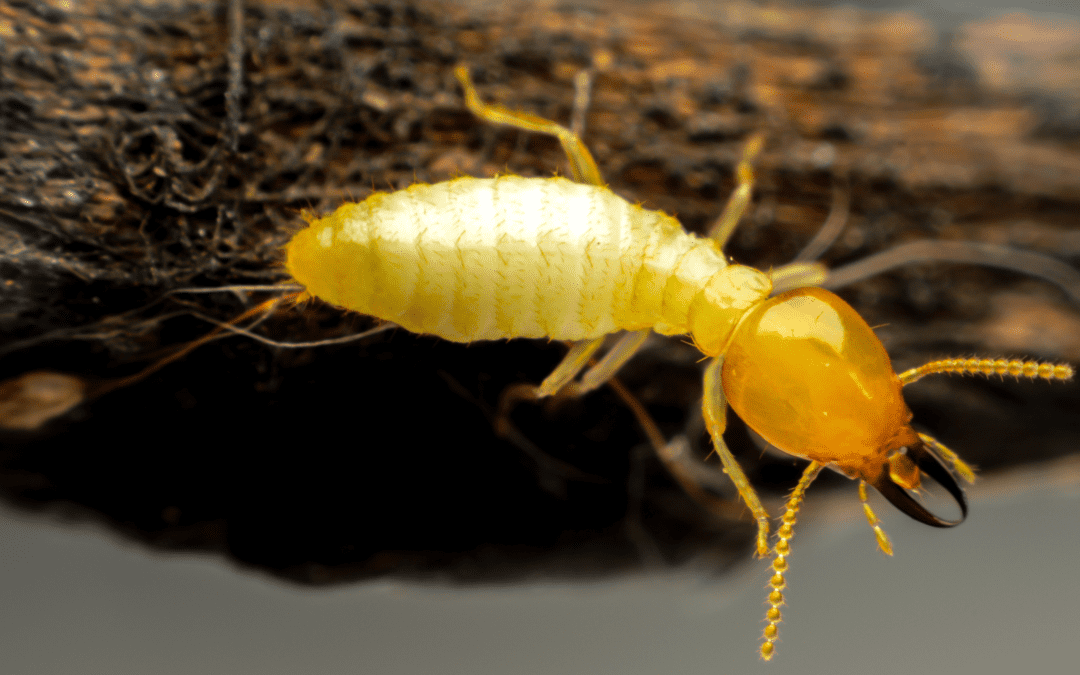
It’s no surprise that termites are still active in the fall. The only factor that changes termite activity in the fall season is their tendency to burrow deeper into the ground. However, if these pests burrow their way into your home, they won’t need to dig deeper to find warmth and instead will infest.
Continuing termite control into the colder months will help to protect your home up until spring begins again. Be sure to keep up with termite control to lessen the chance of termites swarming in the spring and summer months.
Regardless of the season, there are common signs of termite infestations to look for in your home, including:
There are a few steps for termite protection you can take in and around your home. Make sure all water and gas lines are sealed adequately. Fix any leaky faucets or appliances and get rid of any standing water. Try to eliminate any cellulose material, as this is a termite’s primary food source.
If you suspect you have a termite problem or want to stay proactive against them, reach out to your local pest control company to receive a free termite inspection and discover the best plan of action perfect for you and your home!
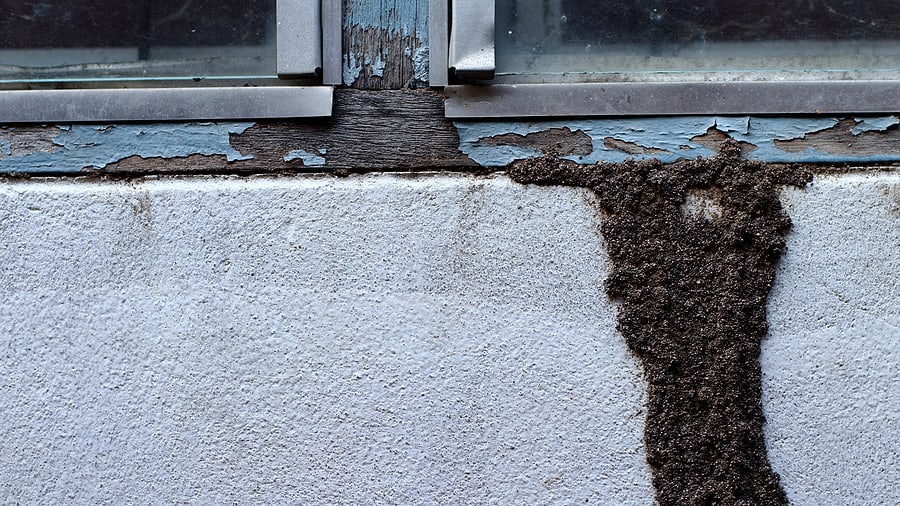
An annual termite inspection is a huge part of termite control. These inspections not only look for signs of termite activity and previous damage, they also look for any areas of your home that might be at risk for future termite infestations. Although termite season peaks in spring and early summer, you can schedule your inspection at any time during the year. What’s most important is that you have it done every year; termites can go undetected for long periods of time so annual inspections can help catch this activity early, saving you on costly treatments and repairs.
The good news about termite inspections is that most companies will perform them for free (unless it’s part of a real estate transaction). In most cases, once the inspection is complete then you will pay for either a treatment (if activity is found) and/or to have your termite bond renewed for the next year.
Once you schedule your termite inspection, the next step is to prepare for your technician’s arrival. Make sure to remove anything under your kitchen and bathroom sinks to allow them to check for any water damage or termite activity in these hotspot areas. In your garage, make sure anything stacked against the walls is pulled out at least 2 feet. The same goes for anything touching the exterior walls of your home. Remove any items that might be blocking the entrance to your attic or crawlspace. Trim any bushes or plants that conceal your exterior walls, crawlspace opening, or foundation.
The average inspection will last anywhere from 45 minutes to 2 hours, depending on the size of your home and property. A technician will carefully inspect both the inside and outside of your home, looking for signs of termites including droppings, discarded wings, mud tubes, damaged wood, and live termites). They will also check for any signs of previous termite damage. A termite inspection should include examination of baseboards, walls, windows, crawlspaces, door frames, windowsills and frames, inside cabinets and closets, attics, garages, and foundations. They will take extra care when inspecting kitchens, bathrooms, and utility rooms since termites will often use plumbing that passes through foundations to gain access to your home. They will also check the surrounding property and outbuildings, as well.
If termite activity is detected, appropriate termite treatment options will be suggested. If there are no signs of activity or infestation, termite prevention tips may also be recommended to help prevent any future damage. Some things you can do around the house include:
If you suspect termite activity or just want to get a step ahead at termite prevention, contact your local pest control company and schedule your free inspection.
How to Continue Caring for Your Lawn in the Fall
9 Common Spiders To Look Out For This Fall
Fall Spider Identification Guide
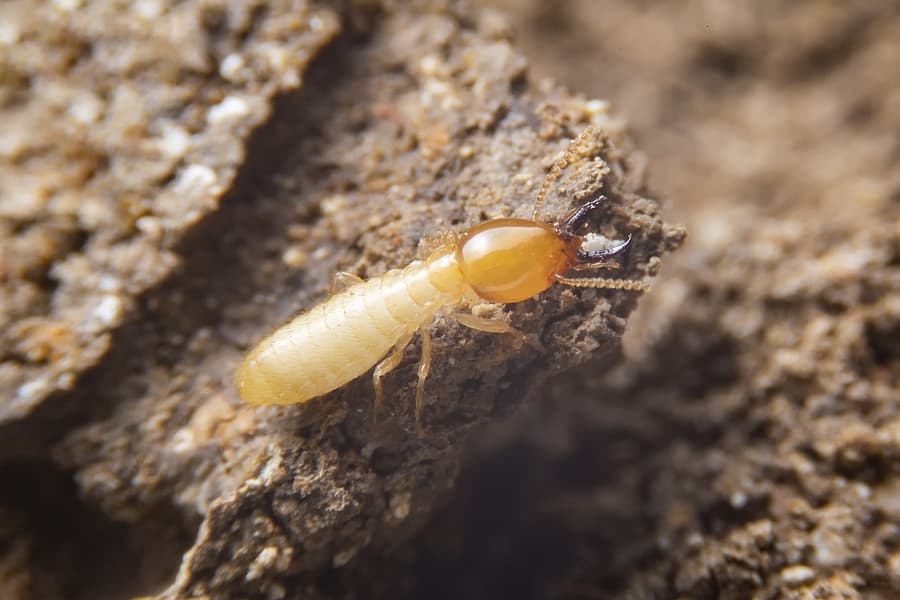
Termites are year-round pests, causing structural damage to homes and properties. The Miami-Gardens climate is hot and humid, the perfect conditions for termites. Every homeowner should implement termite control by placing certain preventative measures throughout their property to help avoid a termite infestation.
One of the most common termites in the U.S. is the subterranean termite. These termites live in colonies underground and will build mud tubes to reach food above the ground. They will often create contact between wood and soil in crawlspaces or areas underneath your home for an entry point.
Throughout your property, make sure that you keep all lumber, wood, and mulch away from your foundation. If you are utilizing firewood, look to place it at least 20 feet away from your home, raised about 8 inches off the ground and stored in plastic containers with lids. If you have a wood fence near the home, make it a routine to check for rotted or infested wood.
Most termite species need moisture to survive, often looking to our homes to find it. To help reduce the risk of termites infesting your home, reduce moisture inside and outside. Check that your gutters and downspouts are pointing away from your foundation. If you’re using a sprinkler, make sure it isn’t spraying on your home. Look inside your home for any plumbing leaks; don’t forget to check your crawlspace for leaks too. Consider investing in crawlspace enclosure, as this will reduce moisture, decrease humidity, prevent mold, avoid wood rot, and prevent termite infestations.
Termites can be hard to spot on your own. These pests can go undetected for long periods, causing significant damage before you realize they’ve been there. Consider reaching out to your local Miami-Gardens pest control company which can perform an annual termite inspection. These professionals can identify signs of termites and take quick action for termite treatments to avoid a full-blown infestation. Even if you don’t suspect you have termites, it’s always a good idea to get ahead of the game when it comes to protecting against termites.
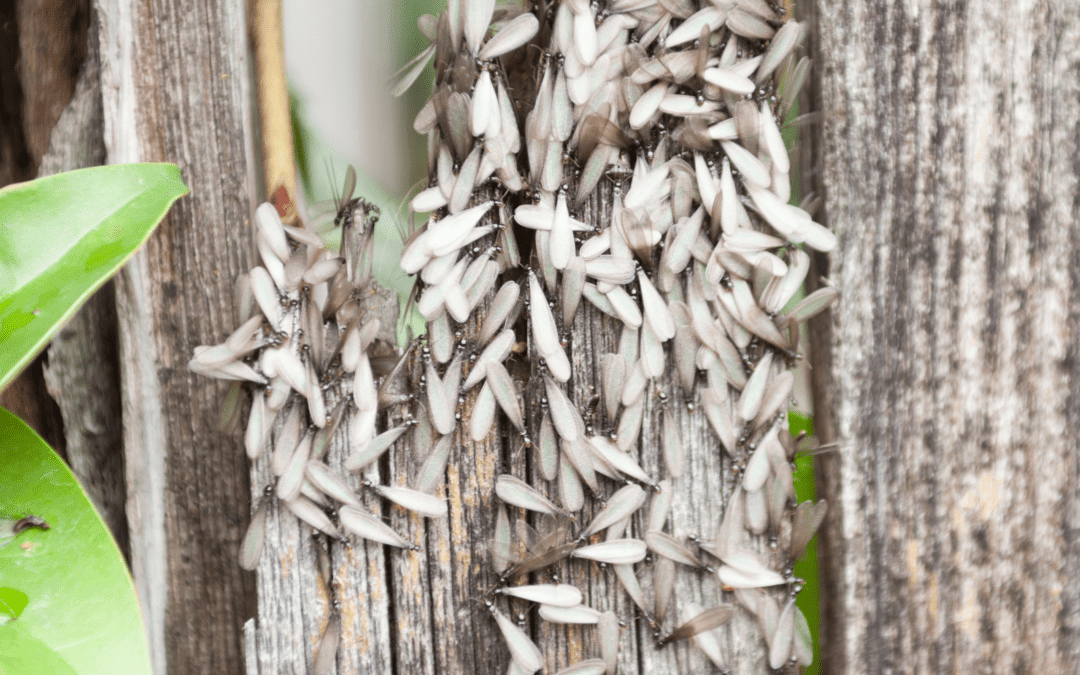
For most homeowners, including those in Bonita Springs, the first sign of a termite infestation is seeing a swarm of flying insects. Not all swarming insects are termites though – some can be flying ants. Let’s break down the physical characteristics to determine the differences between the two.
There are three easy ways to tell flying ants and termites apart:
These two pests also have behavioral differences. They both live in large colonies with designated levels of caste systems. Termites can also be found in decaying trees, stumps, wood debris, lumber, and wooden structures. Some ants, like carpenter ants, inhabit wood, but most other species do not. Unlike ants, termites can cause major structural damage since they eat wood, and ants do not.
They also have different life cycles. Ants go through four stages of development, while termites only have three. During the warm months of swarming season, the fertile winged ants and termites fly from their nests to mate and establish new colonies, making it more difficult to tell the difference between the two pests.
If you believe you have termites causing damage to your home, reach out to your local Bonita Springs pest control company, who can provide a free inspection and a service plan that is right for you and your property.

Hot, humid weather is inevitable when you live in the Fort Lauderdale area. Unfortunately, pests like termites thrive in these conditions, looking to our homes for a food source. Termites will eat wood inside out, sometimes going undetected for a long period of time. Some common termite species include drywood termites and subterranean termites. To enhance termite control around your home, it’s important for every homeowner to utilize preventative measures throughout their property.
Improper drainage is one of the most common reasons termites infest. Subterranean termites are looking for moist wood to infest, causing significant structural damage. Our gutters often clog, causing water to pool and create insulation vulnerable to termites. Likewise, the leaves, twigs, and debris can get caught and build up in gutters, softening your roof and causing it to rot. Divert your down-spout away from your home and consider utilizing splash blocks to prevent pooling water.
Showing off your beautiful landscaping and a green, lush yard is ideal for every homeowner. Unfortunately, the materials we sometimes use to create this can be beneficial to termites. Landscaping mulch can be aesthetically pleasing, but unfortunately, it can attract termites into our homes. Try to minimize your use of mulch but if you do utilize it, keep it away from your foundation by at least 15 inches.
Excessive moisture can cause multiple problems for your home, including termites. Leaking pipes or lack of airflow can create an ideal environment for these pests. A major step in preventing termites is eliminating excessive moisture inside the home. Enclosing your crawlspace is a great way to not only prevent termites and other pests, but to also improve the overall health of your home.
If you’ve taken as many precautions as possible to avoid termites but are still looking for extra protection, consider reaching out to your local Fort Lauderdale pest control company. These professionals can provide you with a termite inspection and a treatment and prevention plan customized to your home.
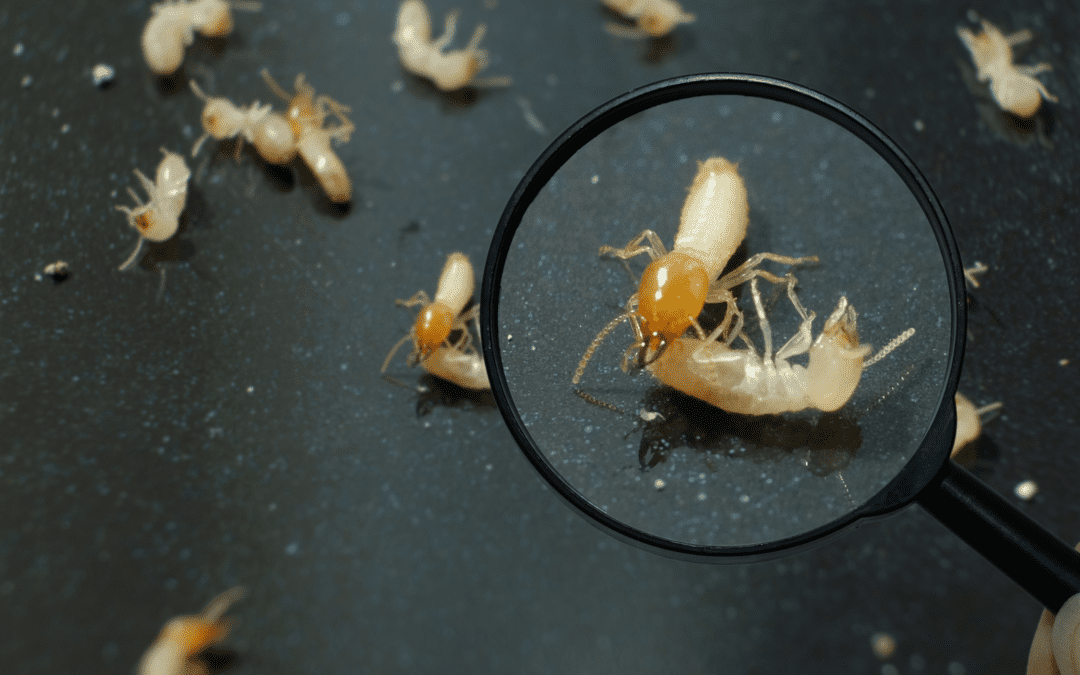
Drywood termites seek dry wood as a food source and will destroy your home in the process. These termites differ from other species, such as subterranean termites, since they tend to create their colonies in wood, instead of in the ground, and need little moisture to survive. Unlike other species, these termites can create devasting damage to homes, excavating wood and ruining it. To prevent them, it’s best to place preventative measures throughout your property.
The first step in preventing drywood termites is inspecting your home. By examining your home, you can get a good idea of what repairs are needed or discover that a termite infestation has established. When inspecting, write down everything you see that’s a concern; this will help overall when relaying to a pest professional. When checking the home’s interior, don’t forget to check in darker areas such as your crawl space, attic, and basements. Check around your baseboards, beams, or other wood materials. Likewise, look at any furniture or firewood inside the home too. As you are investigating the exterior of your home, be extra thorough, as these termites haven’t entered the home yet. Check your foundation, old trees, wooden sheds, and firewood.
Drywood termites are very small, ranging from 3/8 to ½ inch in length, allowing them to fit in the smallest hole or gap. If you find any openings leading into your home, it’s best to repair them immediately. Likewise, keeping your home’s attic and crawlspace well ventilated will help reduce moisture and the risk of a termite infestation. Consider encapsulating your crawlspace or insulating your attic.
Drywood termites are looking for any wood materials to inhabit. Make sure you place firewood at least 20 feet away from the home and raise it off the ground. Additionally, trim all shrubs, bushes, or other dense greenery so that it doesn’t touch the side of your home. If you have old trees, lumber, or tree stumps, consider removing them so these pests don’t infest and make their way inside your home.
Sometimes all the prevention in the world can’t stop termites from infesting homes. If a termite infestation has occurred, it’s best to call your local South Florida pest control company for extra help. A termite professional will provide you with a thorough termite inspection, a termite control plan based on your home’s needs, and recommendations on preventing them in the future.